Product discovery is a crucial product lifecycle process that separates market winners from the rest. Whether you’re a seasoned product manager or a startup founder, understanding product discovery is essential for creating products that resonate with users and drive business growth.
But what exactly is product discovery, and why is it so important?
In a nutshell, product discovery involves uncovering and validating customer needs before investing significant resources in development — so you build the right product for the right audience.
In this guide, we’ll dive into the world of product discovery, exploring its key components, benefits, and challenges. We’ll also show you how monday dev can help streamline your product discovery process in one flexible platform.
Try monday devWhat is product discovery?
The product discovery process identifies and validates customer needs, problems, and market opportunities to ensure you build the right product for the right audience. It’s a critical phase in product management that helps teams reduce uncertainty, prioritize features, and align solutions with user and business needs. The ultimate goal is to build products that solve real problems effectively while achieving business objectives.
Key questions in product discovery
Product discovery typically addresses four main questions:
- Is it valuable? Will customers find it useful and choose to buy or use it?
- Is it usable? Can users easily understand and use the product?
- Is it feasible? Can the team deliver the solution within constraints?
- Is it strategic? Does it align with business goals and stakeholder expectations?
Why is product discovery important?
Product discovery is an essential part of the product development process that helps teams build innovative products or add features that users genuinely want rather than making the wrong assumptions.
- User-centric approach: It ensures that products address genuine user pain points by involving real users in the process.
- Resource optimization: It prevents wasting time and resources on building features or products that lack demand.
- Informed decision-making: It helps teams prioritize features based on validated data rather than assumptions.
- Improved success rates: It increases the likelihood of product-market fit by aligning solutions with user needs and market trends.
Examples of product discovery
Here are four examples of companies across various industries that have successfully used product discovery to understand user needs, improve their products, and drive business growth.
Vueling Airlines
Vueling’s e-commerce team implemented a product discovery process to bridge the gap between business operations and technology teams. The process helped the Spanish low-cost airline identify market needs and rapidly adapt products, leading to increased agility and business growth.
Epsor
Leading fintech startup Epsor used product discovery to improve user engagement and innovation. They implemented in-app surveys and leveraged Screeb for better feedback collection and analysis. Key use cases included gathering early insights, validating hypotheses, recruiting users for solution exploration, and measuring feature success.
Winware
Winware founder Steven Cohn conducted over 300 customer interviews before building any product. He used various product discovery tactics to recruit interview participants, including LinkedIn outreach, personal networks, and content marketing.
Apple iPhone
Apple identified changing user needs for mobile devices in the early 2000s. They used product discovery to validate the concept of combining a phone, iPod, and internet communicator into a single device. Teams conducted extensive usability testing and prototyping before launching the revolutionary iPhone in 2007.
What are the stages of the product discovery process?
The stages of product discovery can vary slightly depending on the specific methodology used, but generally, they fall into the following key phases.
- Learn and understand: Involves conducting user research to identify problems and needs and gathering insights from customer feedback, market analysis, and internal data.
- Define and decide: Teams clearly define the problem statement and set priorities and objectives for the product discovery process.
- Ideate and prioritize: Focuses on generating potential solutions and product ideas, then prioritizing opportunities using frameworks like RICE or Opportunity Solution Trees.
- Prototype and test: Teams create prototypes or minimum viable products (MVPs) and validate solutions through user testing and feedback.
- Analyze and iterate: Teams analyze results from testing and refine prototypes based on user feedback.
It’s possible to break these stages down further, but the core process remains consistent. For example, one expanded version might be:
- Set up the product discovery team
- Conduct exploratory research
- Define the problem
- Generate possible solutions
- Validate and prioritize proposals
- Prototype and test
- Align with stakeholders
- Integrate continuous discovery into product design and delivery
It’s important to note that product discovery is often an iterative process, with teams cycling through these stages multiple times to refine their understanding and solutions. Additionally, many product teams now practice continuous product discovery, integrating these activities throughout the entire product development lifecycle rather than treating them as a single, discrete phase.
Product discovery frameworks
Teams use several frameworks to help structure the product discovery process.
- Dual-track Agile: Separates discovery (research and validation) from delivery (development) and allows continuous exploration of new ideas while delivering features iteratively.
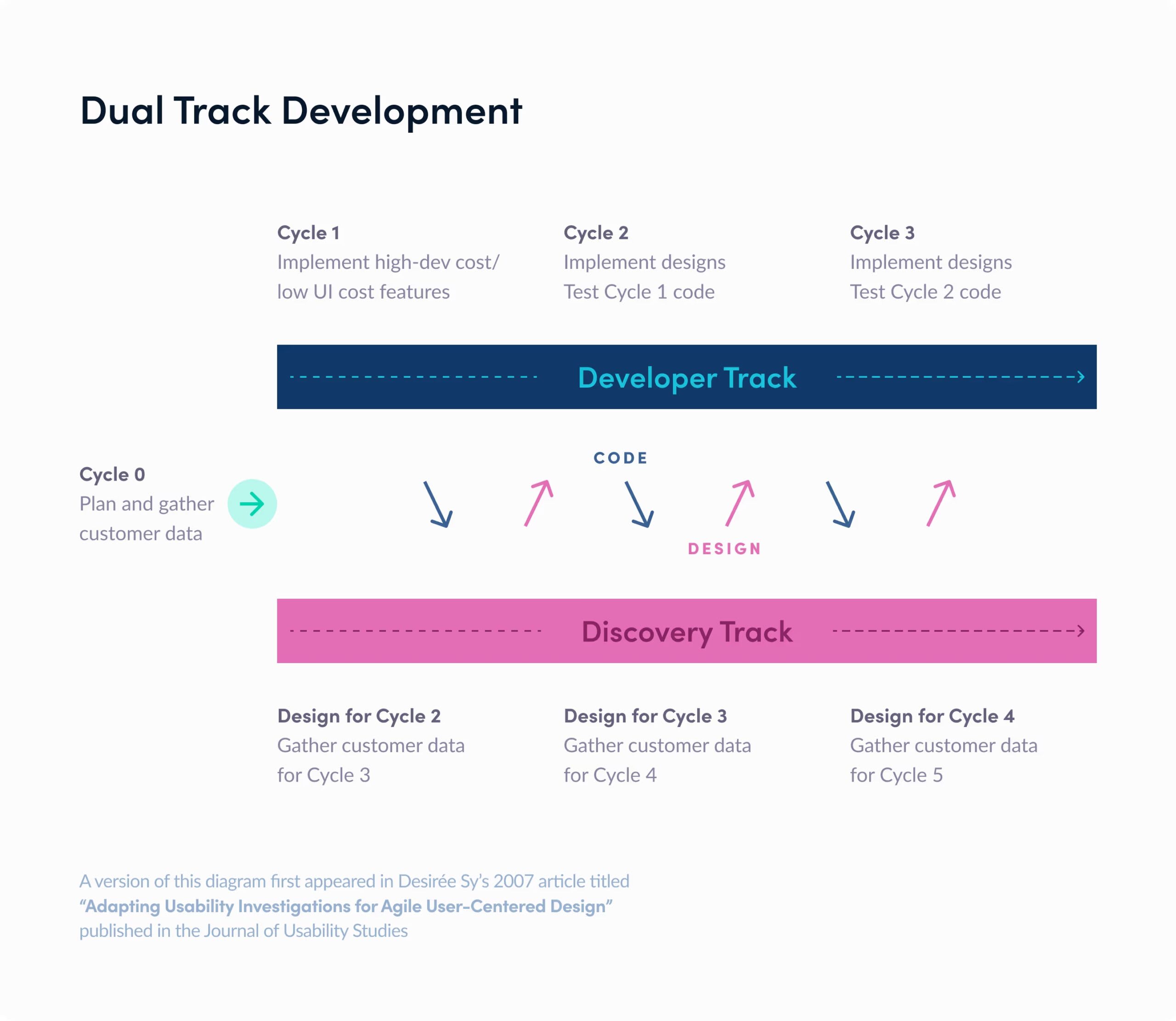
- Design sprint: Involves a five-day process for rapidly solving problems, designing solutions, and validating ideas through prototyping and testing with real users.
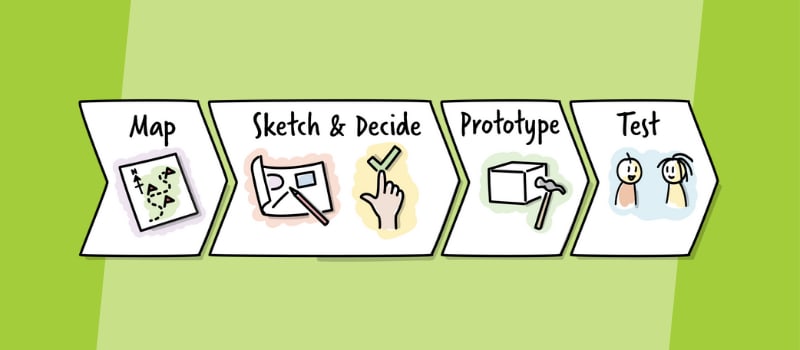
- Opportunity solution tree (OST): Visualizes connections between opportunities (problems) and possible solutions to guide prioritization.
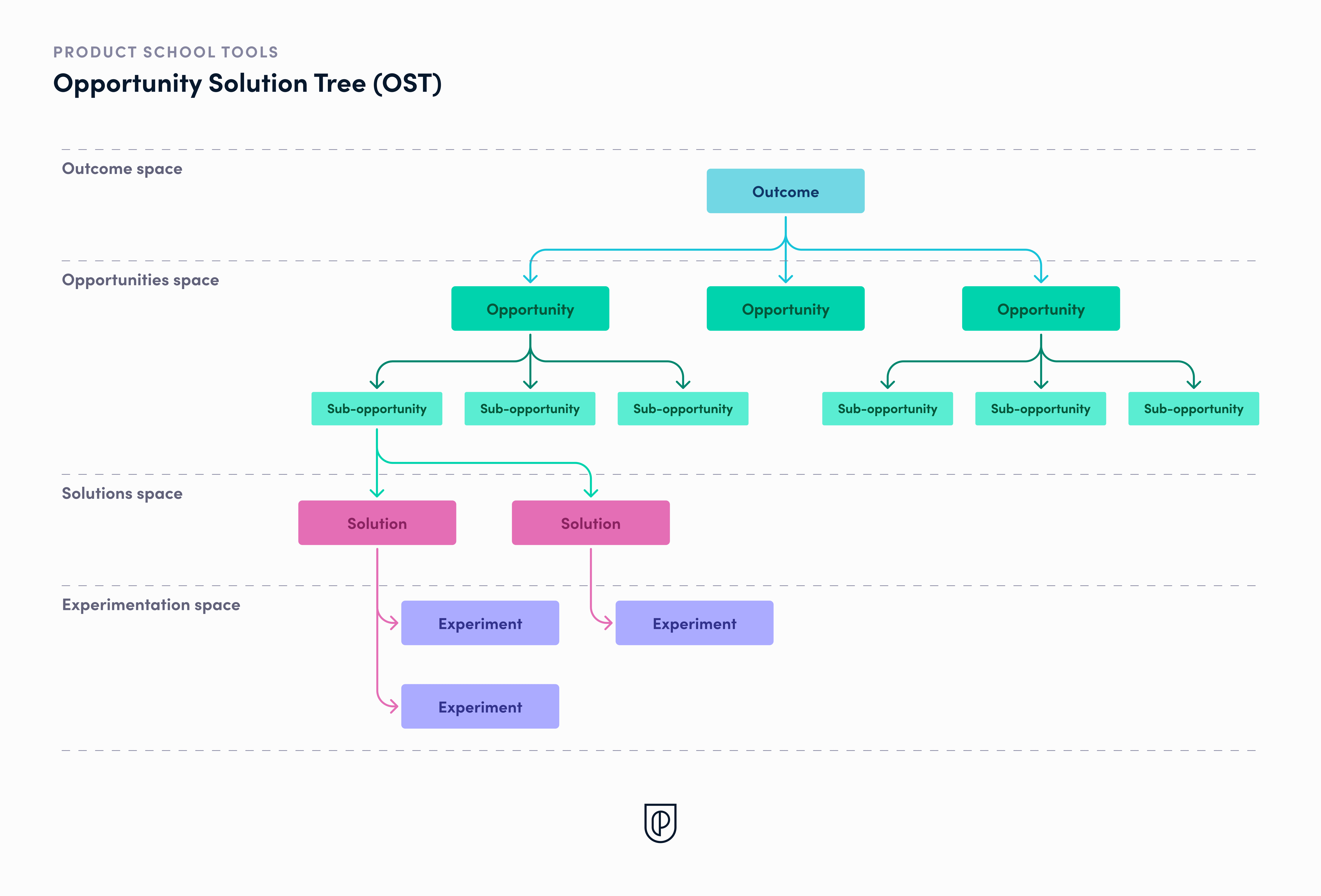
- Jobs-to-be-done (JTBD) framework: Focuses on understanding the underlying motivations and desired outcomes of users rather than just their stated wants.
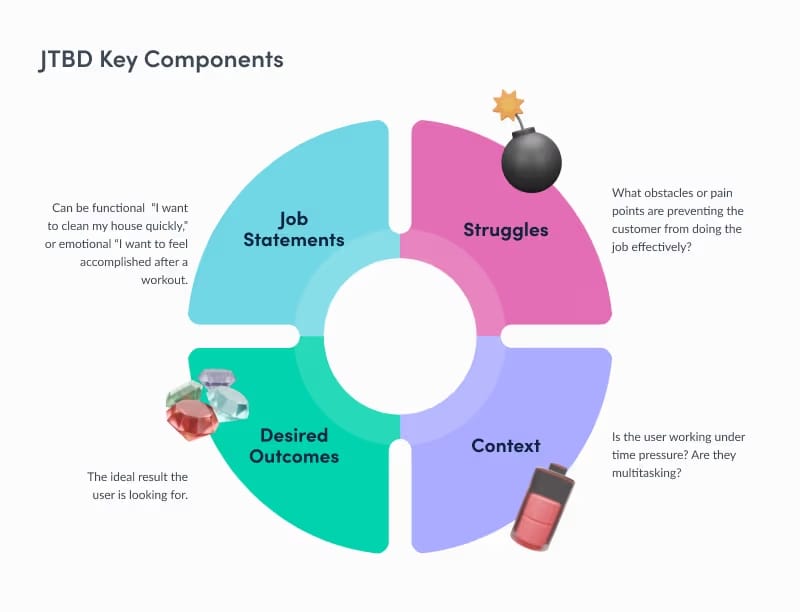
- Double Diamond: Divides the process into four phases — two diamonds representing divergent and convergent thinking — to guide teams from problem discovery to solution delivery.
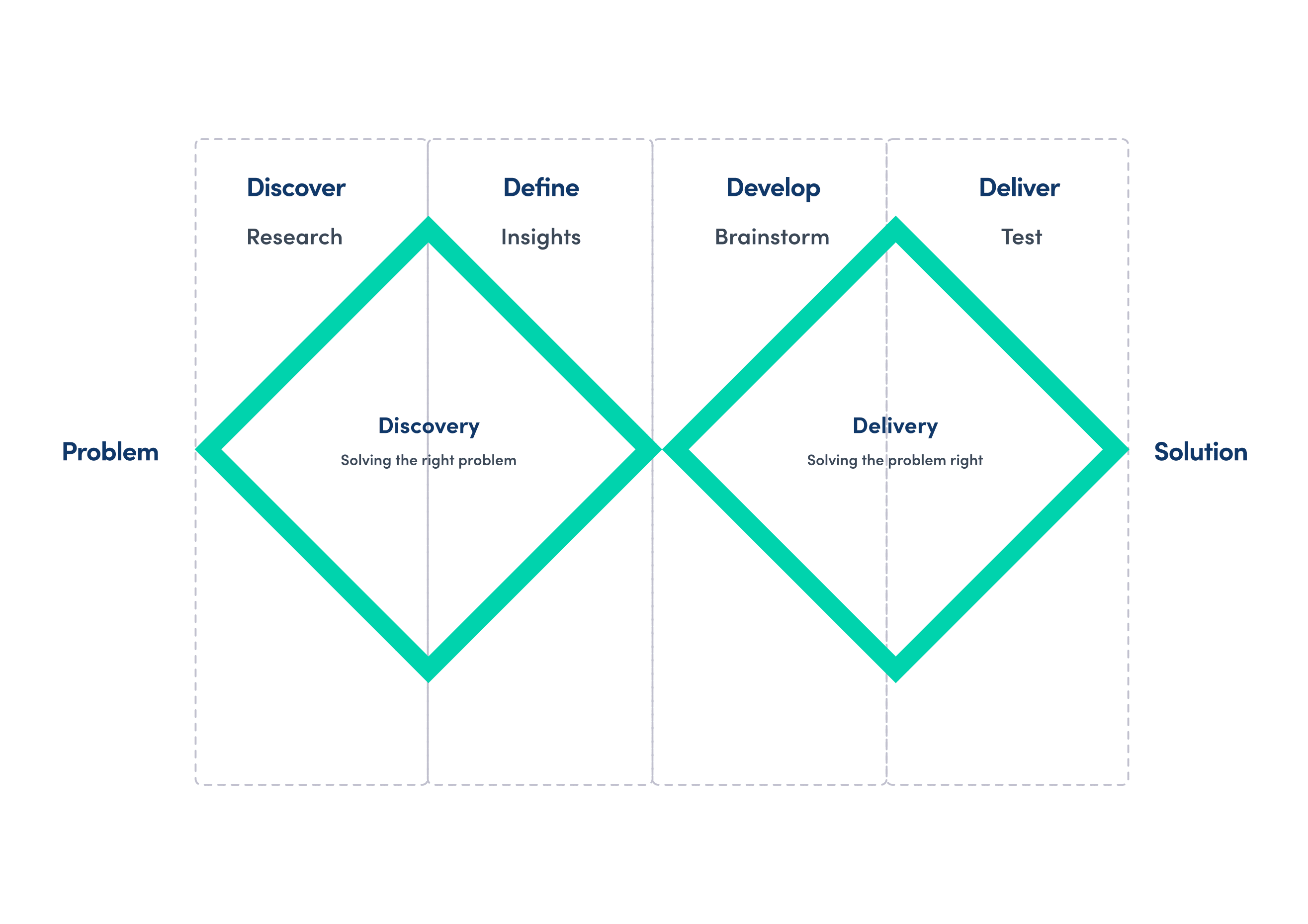
- Dynamic product discovery: Emphasizes continuous, iterative processes integrated with delivery systems and uses centralized data sharing for transparency and collaboration.
10 popular product discovery methods and techniques
Here are the ten most popular product discovery methods and techniques that teams use to understand user needs, validate ideas, and develop successful products.
- Customer interviews: This method involves direct conversations with users to gather insights about their needs, pain points, and expectations.
- Product analytics: Analyzing user behavior data helps teams understand how customers interact with existing products and identify areas for improvement.
- Competitor analysis: Studying competitors’ offerings provides valuable insights into market trends and potential opportunities.
- The five ‘Whys’ technique: This approach asks “why” repeatedly to uncover the root cause of a problem or user need.
- Brainstorming: Team-based ideation sessions generate a wide range of potential solutions to identified problems.
- Prioritization techniques: Methods like RICE (Reach, Impact, Confidence, Effort) help teams decide which ideas to pursue first.
- Prototyping: Creating low-fidelity versions of products or features allows for quick testing and iteration of ideas.
- Usability testing: This involves observing users interacting with prototypes or existing products to identify usability issues and areas for improvement.
- Design thinking: A human-centered approach that emphasizes empathy, ideation, and rapid prototyping to solve complex problems.
- Lean startup methodology: Emphasizes rapid experimentation and learning through the build-measure-learn cycle.
The benefits and challenges of product discovery
Product discovery offers significant benefits but also presents several challenges. Here’s an overview of both sides of the coin.
Product discovery benefits
- Optimized resources: By identifying real user needs early on, product discovery helps avoid investing time and money into features that users don’t want or need.
- Increased user satisfaction: Products built around validated user needs are more likely to be adopted, used regularly, and deliver a positive user experience.
- Enhanced innovation: Product discovery helps uncover hidden opportunities and unlock new avenues for product development.
- Improved competitive advantage: Understanding users better than competitors allows for the creation of differentiated products that stand out in the market.
- Better product-market fit: Continuous discovery ensures that products remain aligned with evolving user needs and market demands.
- Informed decision-making: Product discovery provides data-driven insights that guide strategic decisions throughout the product lifecycle.
- Reduced costs: By identifying and prioritizing essential features early in the process, product discovery reduces overall development costs.
- Accelerated development: Pre-planning through discovery can lead to faster product delivery by creating a well-defined timeline and reducing last-minute changes.
Product discovery challenges
- Analysis paralysis: Teams often struggle with abundant information from various sources, making it difficult to act decisively.
- Capturing the right signals: Leveraging the right data sources and avoiding over-reliance on anecdotal feedback can be challenging.
- Continuous implementation: Many teams struggle to incorporate discovery as an ongoing process throughout the product lifecycle.
- Cross-functional collaboration: Involving all relevant team members, including engineers and designers, in the discovery process can be difficult.
- Balancing discovery and delivery: Teams often find it challenging to allocate time for discovery while meeting delivery deadlines.
- Lack of user research candidates: Finding appropriate participants for user research can be a significant hurdle.
- Budget constraints: Product discovery can be expensive depending on the chosen methods, and not all teams have the necessary budget.
- Leadership buy-in: Some leaders may not see the value in research, creating roadblocks for teams trying to implement thorough discovery processes.
- Maintaining a clear vision: Conducting discovery without a clear strategy aligned with business objectives can lead to confusion and misaligned efforts.
- Overcoming biases: Teams may struggle to overcome personal opinions and focus on user needs rather than internal assumptions.
How monday dev can help with product discovery
Built on the robust monday.com Work OS, monday dev allows product and engineering teams to manage the entire product lifecycle from discovery to delivery in one flexible platform. Here’s how monday dev can help with product discovery:
- Idea management: monday dev syncs with WorkCanvas, where teams can capture and organize product ideas on a digital whiteboard.

- Collaboration tools: The platform provides robust collaboration features — including messaging, commenting, and shared workspaces — to facilitate communication between team members and stakeholders during the discovery process.
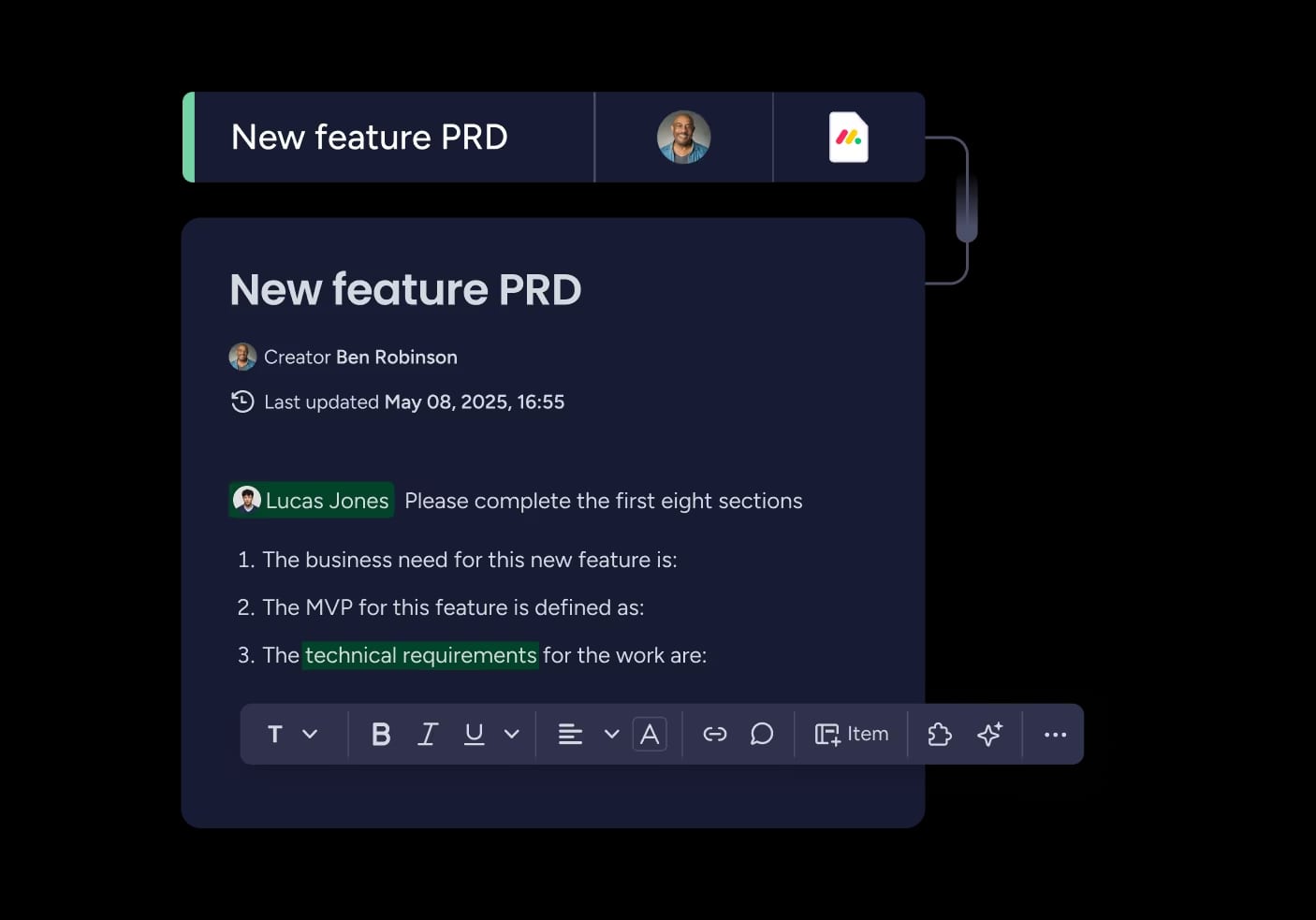
- Customizable boards: Teams can use templates and create custom boards to suit their specific product discovery needs with tailored workflows and processes.
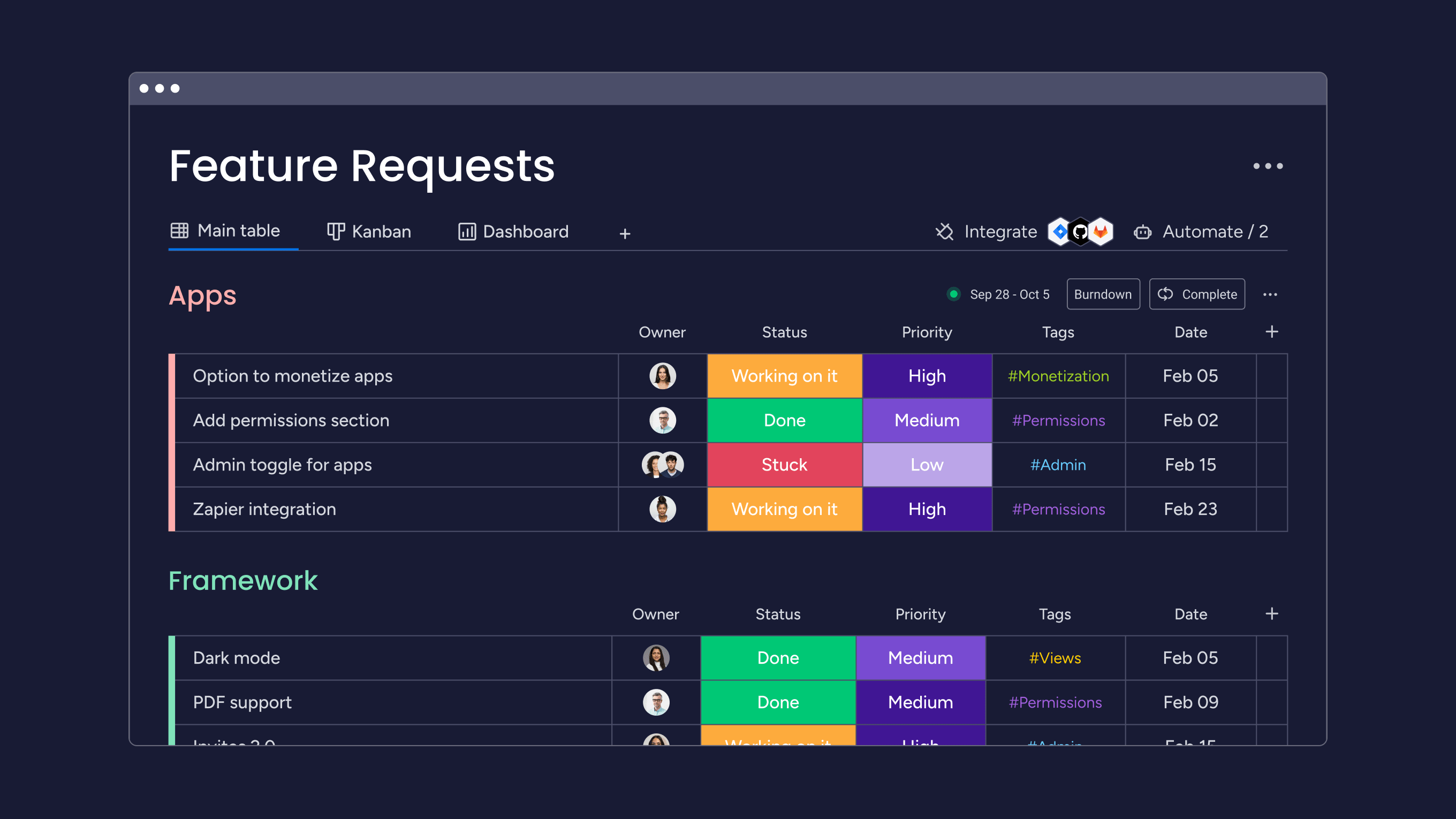
- Feature prioritization: monday dev helps teams evaluate potential features collaboratively and make data-driven decisions on what to prioritize.
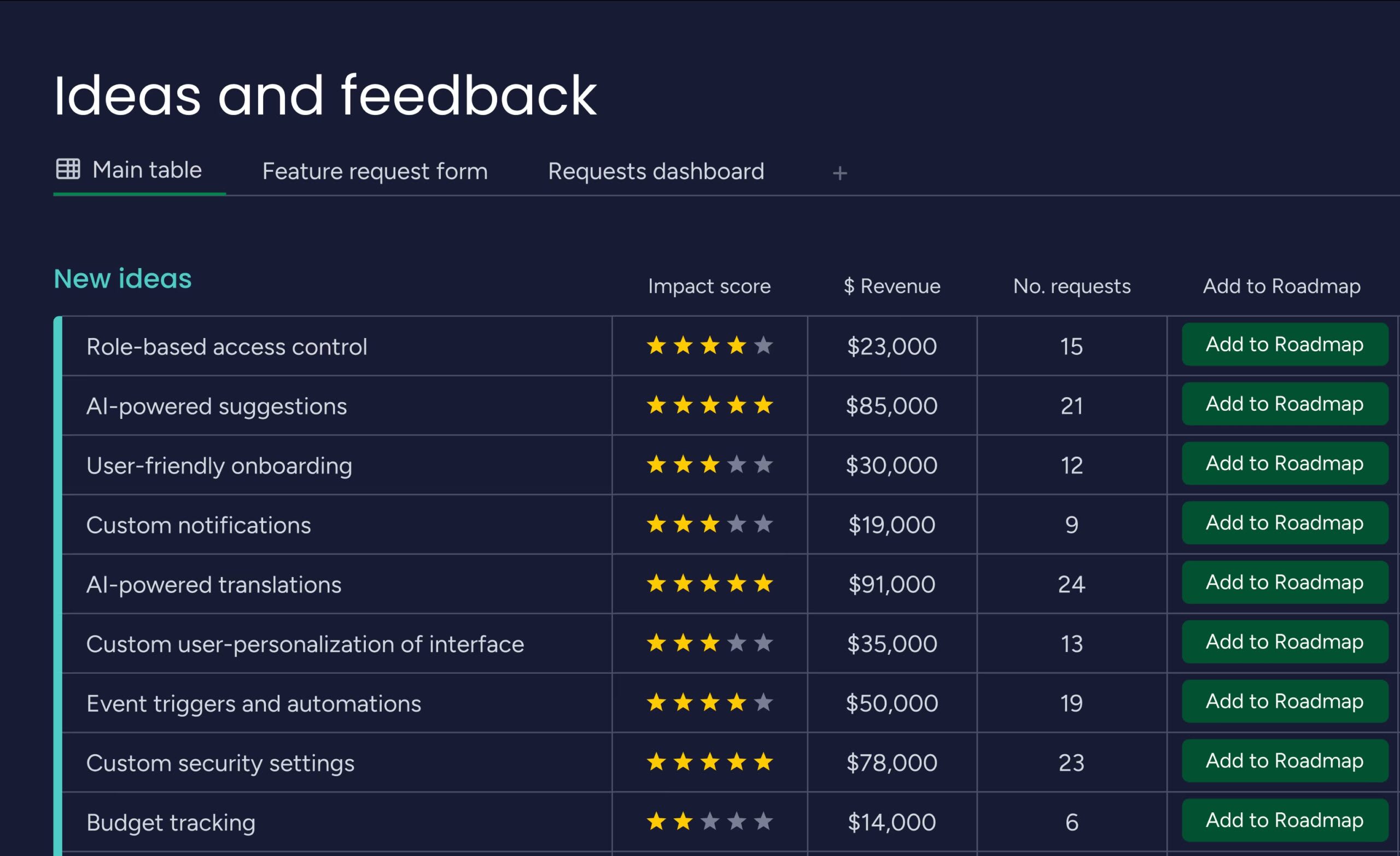
- Analytics and reporting: The platform includes powerful analytics and reporting features, enabling teams to track key metrics, visualize data, and generate insights to inform product decisions.
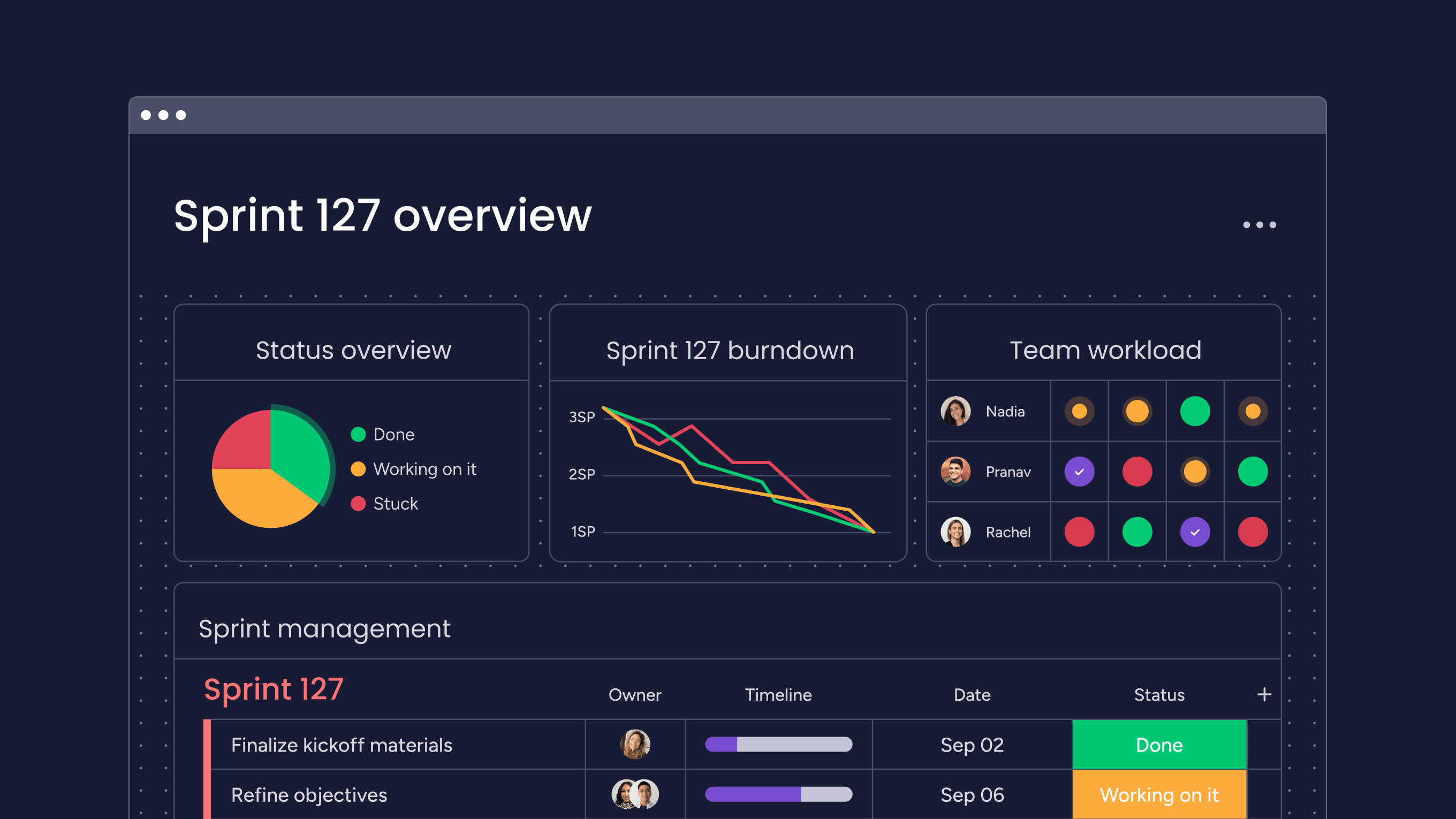
- Integration capabilities: monday dev supports numerous integrations with other tools, allowing teams to connect their product discovery process with different aspects of their workflow.
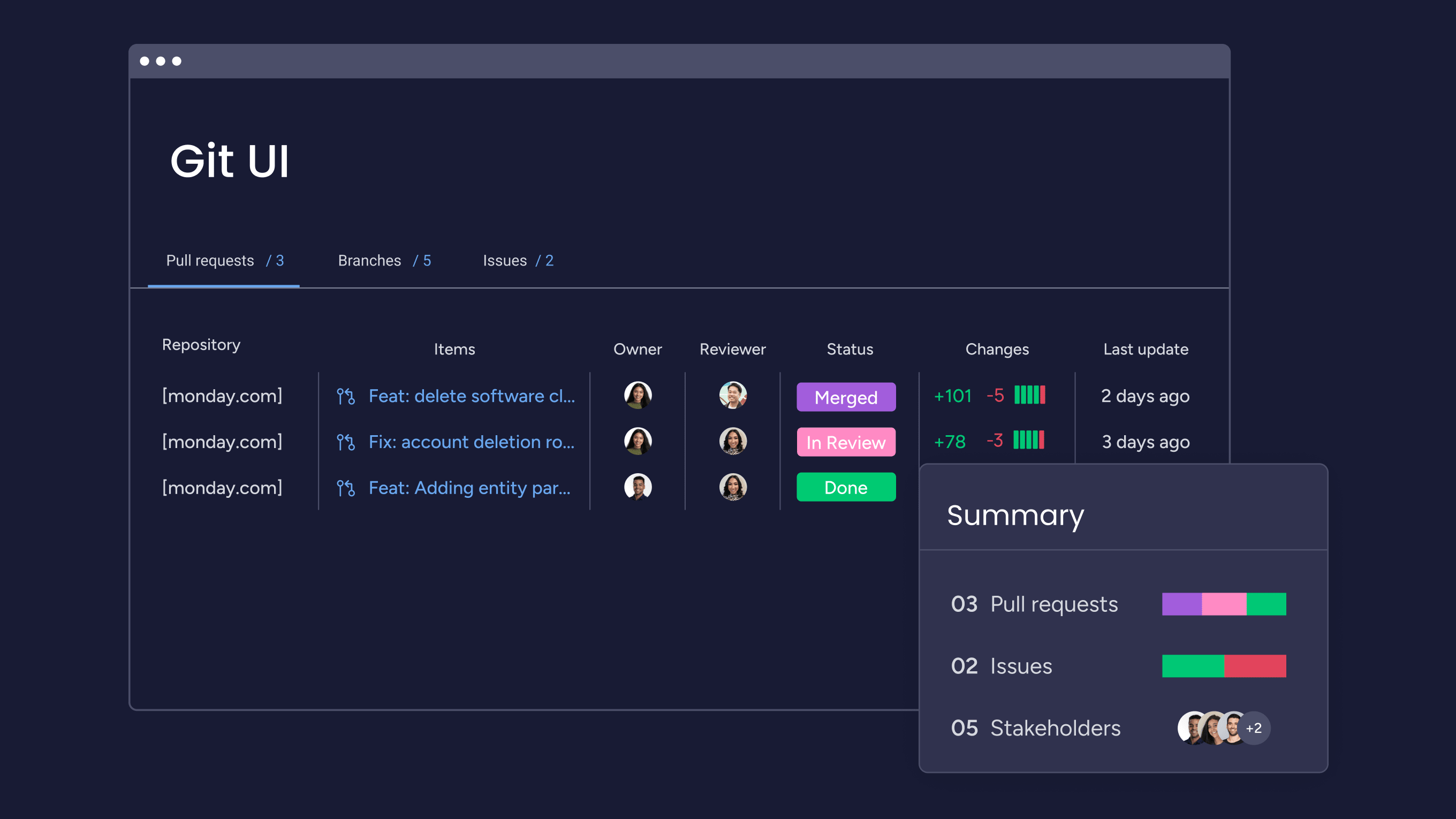
- Sprint management: While more focused on development, the sprint management features can be adapted for discovery sprints, helping teams organize and track progress during the discovery phase.
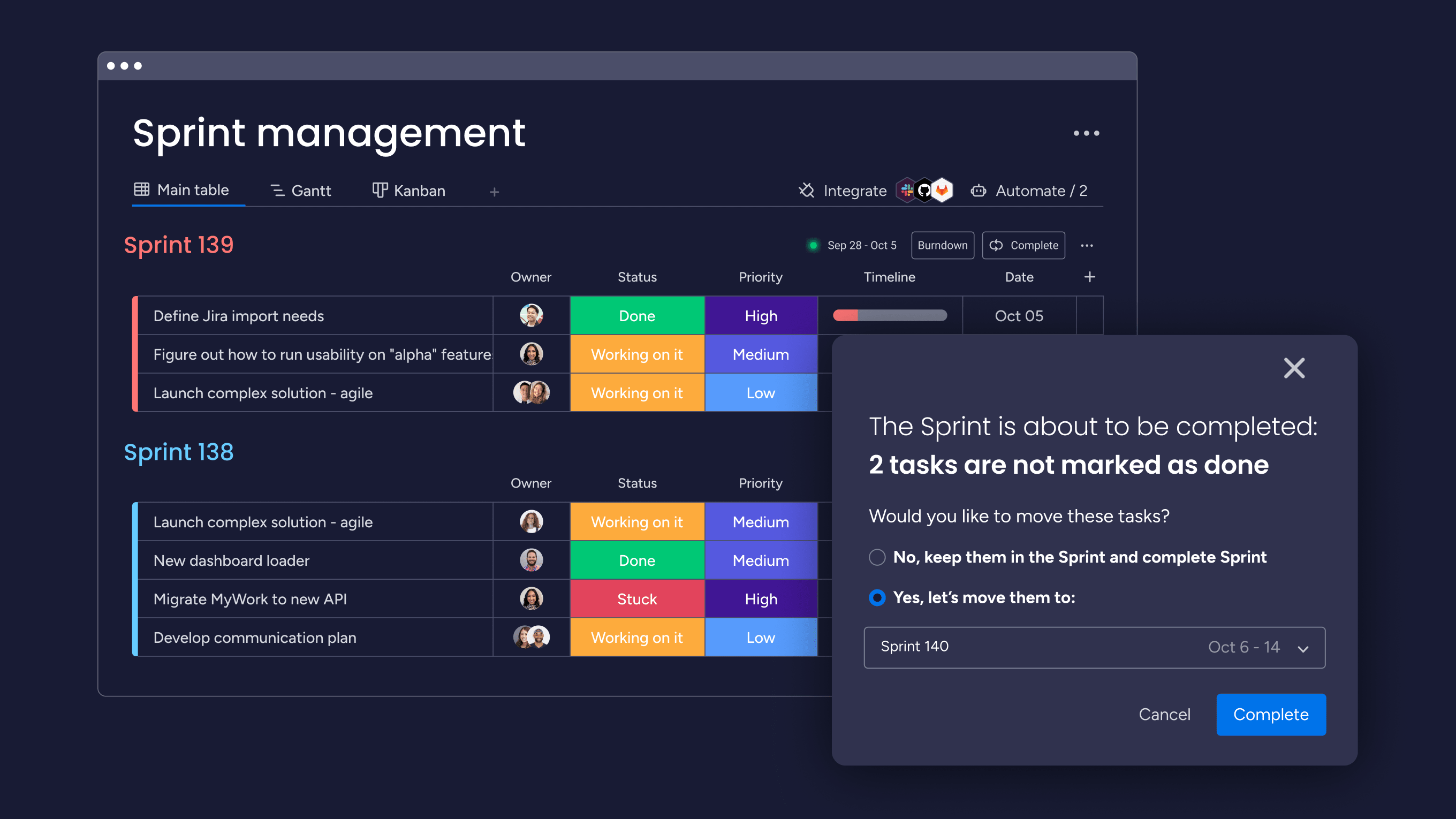
- Automation: monday dev offers AI and automation features that can streamline repetitive tasks in the discovery process, allowing teams to focus on more critical aspects of product discovery.
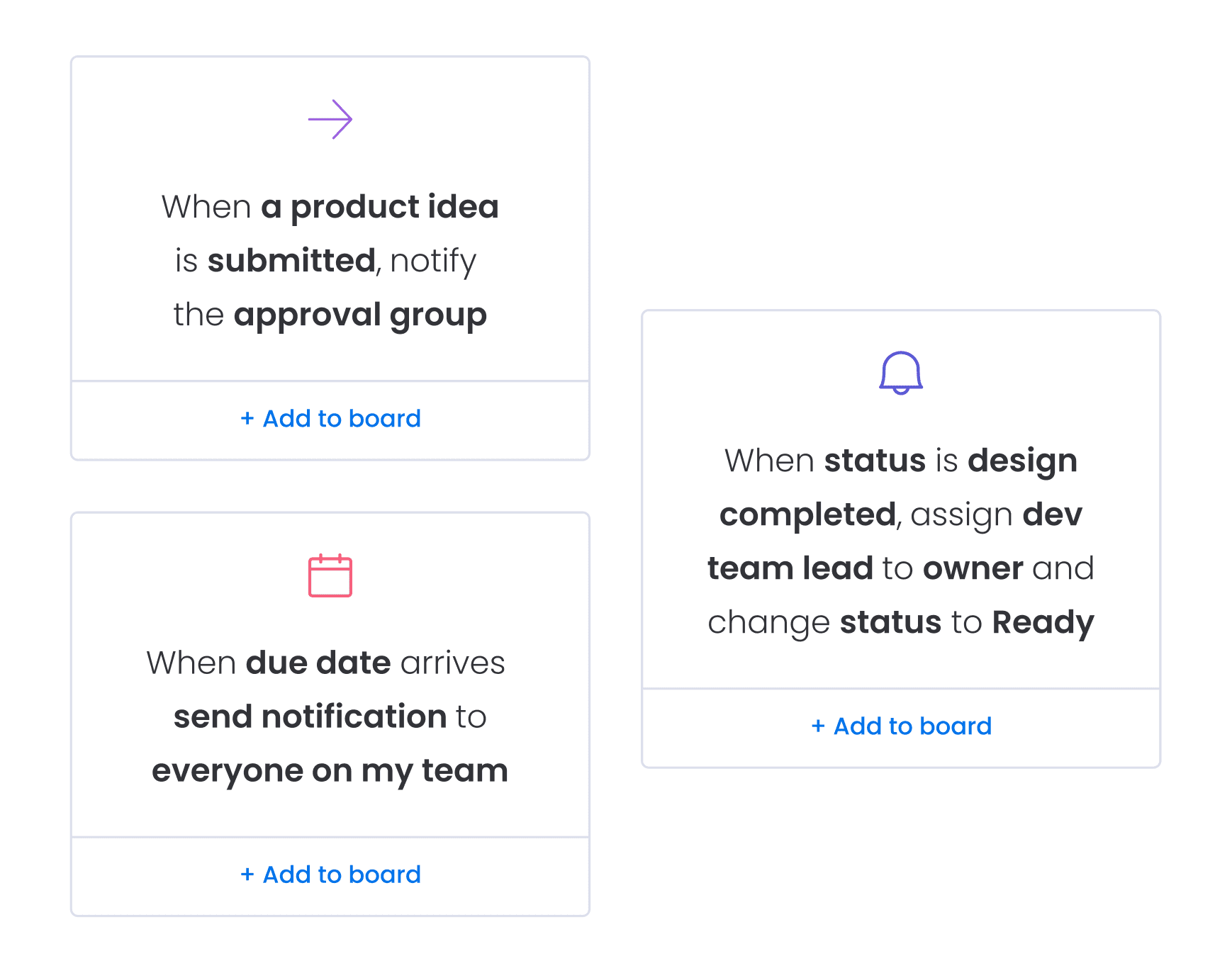
But don’t just take our word for it — experience monday dev yourself with a free trial and see how you can manage product discovery and product development in one flexible platform.
Try monday devFAQs
What are the goals of product discovery?
Product discovery's primary goals are to deeply understand customer needs, validate product ideas, and ensure teams build the right product for the right customer. It aims to separate good ideas from bad ones by answering key questions about value, usability, feasibility, and strategic alignment. By achieving these goals, product discovery helps teams make informed decisions, avoid resource waste, and create products that meet market demands and solve real user problems.
What does good product discovery look like?
Good product discovery involves a thorough understanding of user needs and problems, validated through continuous research and feedback loops. It ensures companies develop products based on real customer pain points and market demands rather than assumptions. Effective product discovery is iterative, involving stages such as user research, problem definition, ideation, prototyping, and testing to ensure that solutions are valuable, usable, and feasible for both users and the business.
What is the product discovery theory?
Product discovery theory proposes that successful product development requires a systematic approach to understanding customer needs and validating solutions before building. It emphasizes continuous learning through regular customer interactions, cross-functional collaboration, and iterative experimentation to separate good ideas from bad ones. The theory advocates for answering key questions about value, usability, feasibility, and strategic alignment to ensure the right product is built for the right customer.
Is product discovery the same as product development?
Product discovery and product development are related but distinct processes. Product discovery identifies and validates customer needs, problems, and market opportunities to ensure you build the right product. In contrast, product development encompasses the entire journey of creating and launching a product, from ideation to market release and beyond, including stages like design, engineering, and marketing.
 Get started
Get started 
